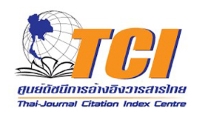JOURNAL DETAIL
Response Surface Methodology Based Optimized Purification of the Residual Glycerol from Biodiesel Production Process
Paper Type |
Contributed Paper |
Title |
Response Surface Methodology Based Optimized Purification of the Residual Glycerol from Biodiesel Production Process |
Author |
Muhammad Danish*, Muhammad Waseem Mumtaz [a], Mahpara Fakhar [a] and Umer Rashid* |
Email |
drdanish62@gmail.com; umer.rashid@yahoo.com |
|
Abstract: Biodiesel is gaining acceptance as an alternative source of energy, due to its important properties, renewability, less toxicity and environmentally friendly attributes. One of the constrains, associated with the use of biodiesel as fuel is its high price. The most promising way to make it cost effective is the purification and utilization of its by-product glycerol. During the refining of glycerol, the following sequence was followed: acidification, neutralization, solvent extraction and decolorization. Optimized conditions for getting a high yield refined product were attained using the response surface methodology (RSM) for different parameters such as pH 1; extraction temperature, 50 °C; extraction time, 40 min; activated carbon dose, 2.0 g and rate of shaking, 350 rpm. Furthermore, the refined glycerol was characterized such as density, 1.65g/cm3; specific gravity, 1.23; ash content, 1.06; refractive index, 1.05 and pH, 6.05. Raman and FTIR spectroscopic methods were used for the monitoring of glycerol purification. |
|
Start & End Page |
1570 - 1582 |
Received Date |
2015-09-15 |
Revised Date |
|
Accepted Date |
2015-12-15 |
Full Text |
Download |
Keyword |
residual glycerol, purification, RSM, characterization |
Volume |
Vol.44 No.4 (October 2017) |
DOI |
|
Citation |
Danish* M., [a] M.W.M., [a] M.F. and Rashid* U., Response Surface Methodology Based Optimized Purification of the Residual Glycerol from Biodiesel Production Process, Chiang Mai Journal of Science, 2017; 44(4): 1570-1582. |
| View:1,045 Download:603 | |
RELATED ARTICLE
Evaluation of Rheological and Functional Properties of Kefiran Biopolymer Isolated From Kefir Grains
Article ID: e2025086
Author:Eda Ondul Koc and Mahmut Inal
Vol.52 No.6 (November 2025). View: 106 Download:10
Article ID: e2025086
Author:Eda Ondul Koc and Mahmut Inal
Vol.52 No.6 (November 2025). View: 106 Download:10
Phase formations, Compressive Strength and Microstructure of Environmentally Friendly Thai Lopburi Calcined Clay-Limestone Cement Mixes
Article ID: e2024089
Author:Arnon Chaipanich, Nalintip Sansuthum, Phakin Chomyen, Kornnika Wianglor and Supakporn Aodkeng
Vol.51 No.6 (November 2024) View: 1,316 Download:298
Article ID: e2024089
Author:Arnon Chaipanich, Nalintip Sansuthum, Phakin Chomyen, Kornnika Wianglor and Supakporn Aodkeng
Vol.51 No.6 (November 2024) View: 1,316 Download:298
Isolation and Preliminary Characterization of Probiotic Isolates from Healthy Thai Adult Feces
Article ID: e2024068
Author:Naruemon Tunsakul, Krit Pongpirul, Lampet Wongsaroj, Chitrasak Kullapanich, Sarn Settachaimongkon and Naraporn Somboonna
Vol.51 No.5 (September 2024) View: 1,583 Download:1,014
Article ID: e2024068
Author:Naruemon Tunsakul, Krit Pongpirul, Lampet Wongsaroj, Chitrasak Kullapanich, Sarn Settachaimongkon and Naraporn Somboonna
Vol.51 No.5 (September 2024) View: 1,583 Download:1,014
Process Optimization and Modeling of Low-cost Activated Carbon Preparation and Its Application in Chromium(VI) Removal
page: 1559 - 1575
Author:Theeradit Phothitontimongkol and Kanyarak Prasertboonyai
Vol.49 No.6 (November 2022) View: 1,405 Download:478
page: 1559 - 1575
Author:Theeradit Phothitontimongkol and Kanyarak Prasertboonyai
Vol.49 No.6 (November 2022) View: 1,405 Download:478
Optimization of GABA Production and Partial gad Gene Identification of Potential Probiotic Levilactobacillus brevis F064A Isolated from Thai Fermented Sausage
page: 1013 - 1027
Author:Jirapat Kanklai, Narumol Thongwai, Patthanasak Rungsirivanich, Yingmanee Tragoolpua and Jeeraporn Pekkoh
Vol.49 No.4 (July 2022) View: 1,665 Download:714
page: 1013 - 1027
Author:Jirapat Kanklai, Narumol Thongwai, Patthanasak Rungsirivanich, Yingmanee Tragoolpua and Jeeraporn Pekkoh
Vol.49 No.4 (July 2022) View: 1,665 Download:714
Synthesis, Characterization and In Silico Biological and Anticancer Activity of 3-(2-Fluorophenyl)-N-(4-Fluorophenyl)- 7H-[1,2,4] Triazolo[3,4-b] [1,3,4] Thiadiazin-6-Amine
page: 377 - 386
Author:Fahad Hassan Shah, Balasaheb Daniyal Vanjare and Song Ja Kim
Vol.49 No.2 (March 2022) View: 1,158 Download:639
page: 377 - 386
Author:Fahad Hassan Shah, Balasaheb Daniyal Vanjare and Song Ja Kim
Vol.49 No.2 (March 2022) View: 1,158 Download:639
A Novel Rapid Ultrasonic Treatment for Acid Protease Extraction from Threadfin Bream and Lizardfish Stomachs and Their Biochemical Characterization
page: 1322 - 1337
Author:Sakonwat Kuepethkaew, Srinivasan Damodaran and Sappasith Klomklao
Vol.48 No.5 (September 2021) View: 1,394 Download:329
page: 1322 - 1337
Author:Sakonwat Kuepethkaew, Srinivasan Damodaran and Sappasith Klomklao
Vol.48 No.5 (September 2021) View: 1,394 Download:329
Conversion of Palm Oil into Biodiesel Production with Heterogeneous Catalyst Derived from Spent Coffee Grounds Ash: Process Optimization Through Response Surface Methodology
page: 580 - 599
Author:Jakkrapong Jitjamnong*, Natthida Numwong, Narinphop Chuaykarn, Chatrawee Direksilp, Apanee Luengnaruemitchai, Napaphat Kongrit and Nonlapan Khantikulanon
Vol.48 No.2 (March 2021) View: 1,064 Download:193
page: 580 - 599
Author:Jakkrapong Jitjamnong*, Natthida Numwong, Narinphop Chuaykarn, Chatrawee Direksilp, Apanee Luengnaruemitchai, Napaphat Kongrit and Nonlapan Khantikulanon
Vol.48 No.2 (March 2021) View: 1,064 Download:193
Extraction and Characterization of Natural Cellulosic Fiber From Jipijapa (Carludovica palmata)
page: 579 - 591
Author:Víctor M. Moo-Huchin, Emilio Pérez-Pacheco, Carlos R. Ríos-Soberanis, Luis A. Bello-Pérez, José M. Cervantes-Uc, Mario A. A. Dzul-Cervantes and Raciel J. Estrada-León
Vol.46 No.3 (May 2019) View: 1,041 Download:381
page: 579 - 591
Author:Víctor M. Moo-Huchin, Emilio Pérez-Pacheco, Carlos R. Ríos-Soberanis, Luis A. Bello-Pérez, José M. Cervantes-Uc, Mario A. A. Dzul-Cervantes and Raciel J. Estrada-León
Vol.46 No.3 (May 2019) View: 1,041 Download:381
Effect of Composition and Sintering Temperature on the Structure and Properties of Porous Bioactive
Glass Scaffolds
page: 568 - 578
Author:Kerim Emre Öksüz*
Vol.46 No.3 (May 2019) View: 813 Download:262
page: 568 - 578
Author:Kerim Emre Öksüz*
Vol.46 No.3 (May 2019) View: 813 Download:262
Preparation Characterization and Application of Novel TiO2 Membrane in Photocatalytic Reactor
page: 361 - 369
Author:Miao Yingchun*, Xu Xiaolin, Liu Kaiquan, Jin Zhitao, Cheng Yuqin and Zhao Xiyan
Vol.46 No.2 (March 2019) View: 743 Download:243
page: 361 - 369
Author:Miao Yingchun*, Xu Xiaolin, Liu Kaiquan, Jin Zhitao, Cheng Yuqin and Zhao Xiyan
Vol.46 No.2 (March 2019) View: 743 Download:243
Optimization, Purification and Characterization of b-xylanase by a Novel Thermotolerant Strain of Microbispora siamensis, DMKUA 245T
page: 2267 - 2282
Author:Antika Boondaeng, Sukhumaporn Krajangsang, Chanaporn Trakunjae, Thanasak Lomthong, Shinji Tokuyama and Vichien Kitpreechavanich
Vol.45 No.6 (September 2018) View: 853 Download:453
page: 2267 - 2282
Author:Antika Boondaeng, Sukhumaporn Krajangsang, Chanaporn Trakunjae, Thanasak Lomthong, Shinji Tokuyama and Vichien Kitpreechavanich
Vol.45 No.6 (September 2018) View: 853 Download:453
Polarization Sensitive Optical Coherence Tomography for Materials Characterization
page: 2232 - 2237
Author:Kunakorn Palawong, Somchai Sonsupap, Santi Maensiri and Panomsak Meemon
Vol.45 No.5 (Special 2018) View: 937 Download:343
page: 2232 - 2237
Author:Kunakorn Palawong, Somchai Sonsupap, Santi Maensiri and Panomsak Meemon
Vol.45 No.5 (Special 2018) View: 937 Download:343
Enhancement of Butanol Production Efficiency from Sweet Sorghum Stem Juice by Clostridium beijerinckii Using Statistical Experimental Design
page: 1235 - 1246
Author:Likit Sirisantimethakom, Thanawat Thanapornsin, Lakkana Laopaiboon and Pattana Laopaiboon*
Vol.45 No.3 (May 2018) View: 1,266 Download:264
page: 1235 - 1246
Author:Likit Sirisantimethakom, Thanawat Thanapornsin, Lakkana Laopaiboon and Pattana Laopaiboon*
Vol.45 No.3 (May 2018) View: 1,266 Download:264
Physicochemical Properties of Magnesium-doped Hydroxyapatite Nanoparticles Prepared by Incipient Wetness Impregnation Method
page: 1091 - 1099
Author:Jutharatana Klinkaewnarong, Sirilak Kamonwannasit, Piaw Phatai*
Vol.44 No.3 (July 2017) View: 915 Download:315
page: 1091 - 1099
Author:Jutharatana Klinkaewnarong, Sirilak Kamonwannasit, Piaw Phatai*
Vol.44 No.3 (July 2017) View: 915 Download:315
Production and Characterization of Bacteriocin-producing Bacteria Capable of Inhibition of Streptococcus dysgalactiae
page: 366 - 374
Author:Nalin Wongkattiya [a], Ian H. Fraser [b], Piyanuch Niamsup [a], Phanchana Sanguansermsri [c] and Don
Vol.44 No.2 (April 2017) View: 870 Download:438
page: 366 - 374
Author:Nalin Wongkattiya [a], Ian H. Fraser [b], Piyanuch Niamsup [a], Phanchana Sanguansermsri [c] and Don
Vol.44 No.2 (April 2017) View: 870 Download:438
Partial Purification and Comparison of Precipitation Techniques of Pyruvate Decarboxylase Enzyme
page: 184 - 192
Author:Julaluk Tangtua, Charin Techapun, Ronachai Pratanaphon, Ampin Kuntiya, Vorapat Sanguanchaipaiwong, T
Vol.44 No.1 (JANUARY 2017) View: 904 Download:320
page: 184 - 192
Author:Julaluk Tangtua, Charin Techapun, Ronachai Pratanaphon, Ampin Kuntiya, Vorapat Sanguanchaipaiwong, T
Vol.44 No.1 (JANUARY 2017) View: 904 Download:320
Biochemical Characterization of Two Acid Phosphatases Purified from Breadfruit (Artocarpus communis) Seeds
page: 1100 - 1112
Author:Hubert Kouassi Konan*, Desire Yapi Assoi Yapi, Clement Yao Yue Bi, Thierry Fankroma Martial Kone , Parfait Eugene Jean N’guessan Kouadio and Lucien Patrice Kouame
Vol.43 No.5 (OCTOBER 2016) View: 801 Download:848
page: 1100 - 1112
Author:Hubert Kouassi Konan*, Desire Yapi Assoi Yapi, Clement Yao Yue Bi, Thierry Fankroma Martial Kone , Parfait Eugene Jean N’guessan Kouadio and Lucien Patrice Kouame
Vol.43 No.5 (OCTOBER 2016) View: 801 Download:848
Purification and Evaluation of Bioactive Fractions for Anti-Cancer Potentials from the Flowers and Leaves of Nyctanthes arbor-tristis L.
page: 100 - 111
Author:Bibechana Timsina[a] and Varalakshmi Kilingar Nadumane*[a]
Vol.43 No.1 (JANUARY 2016) View: 1,325 Download:433
page: 100 - 111
Author:Bibechana Timsina[a] and Varalakshmi Kilingar Nadumane*[a]
Vol.43 No.1 (JANUARY 2016) View: 1,325 Download:433
Antibacterial Agents from Trichoderma harzianum strain T9 Against Pathogenic Bacteria
page: 304 - 316
Author:Weeraya Phupiewkham, Pisan Sirithorn, Weerasak Saksirirat, Sompong Thammasirirak
Vol.42 No.2 (APRIL 2015) View: 1,375 Download:293
page: 304 - 316
Author:Weeraya Phupiewkham, Pisan Sirithorn, Weerasak Saksirirat, Sompong Thammasirirak
Vol.42 No.2 (APRIL 2015) View: 1,375 Download:293
Purification and Characterization of Fungal Laccase from Mycena purpureofusca
page: 151 - 160
Author:Shujing Sun1, Yonghui Zhang1, Youxiong Que2, Bixian Liu1, Kaihui Hu1, and Liping Xu2*
Vol.40 No.2 (APRIL 2013) View: 870 Download:240
page: 151 - 160
Author:Shujing Sun1, Yonghui Zhang1, Youxiong Que2, Bixian Liu1, Kaihui Hu1, and Liping Xu2*
Vol.40 No.2 (APRIL 2013) View: 870 Download:240
Monodispersity and Stability of Gold Nanoparticles Stabilized by Using Polyvinyl Alcohol
page: 31 - 38
Author:Pichitchai Pimpang, Supab Choopun
Vol.38 No.1 (JANUARY 2011) View: 780 Download:234
page: 31 - 38
Author:Pichitchai Pimpang, Supab Choopun
Vol.38 No.1 (JANUARY 2011) View: 780 Download:234
Simple Purification of Indirubin from Indigofera
tinctoria Linn. and Inhibitory Effect on MCF-7 Human
Breast Cancer Cells
page: 329 - 337
Author:Paitoon Aobchey , Supachok Sinchaikul , Suree Phutrakul and Shui-Tein Chen
Vol.34 No.3 (SEPTEMBER 2007) View: 924 Download:345
page: 329 - 337
Author:Paitoon Aobchey , Supachok Sinchaikul , Suree Phutrakul and Shui-Tein Chen
Vol.34 No.3 (SEPTEMBER 2007) View: 924 Download:345
A Rapid Process for Purification of Chitinase from
the Latex of Carica papaya
page: 237 - 242
Author:Sarote Nitsawang [a] and Pawinee Kanasawud* [b]
Vol.33 No.2 (MAY 2006) View: 789 Download:292
page: 237 - 242
Author:Sarote Nitsawang [a] and Pawinee Kanasawud* [b]
Vol.33 No.2 (MAY 2006) View: 789 Download:292
Optimising the Purification of Terpyridine-Cytochrome
c Bioconjugates
page: 236 - 246
Author:Joshua R. Peterson, and Pall Thordarson
Vol.36 No.2 (MAY 2009) View: 854 Download:270
page: 236 - 246
Author:Joshua R. Peterson, and Pall Thordarson
Vol.36 No.2 (MAY 2009) View: 854 Download:270
Cloning and Expression of Protease Gene from Thermophilic Bacterium Bacillus stearothermophilus TLS33 in Escherichia coli DH5α
page: 53 - 59
Author:Thammarat Kaosombat [a], Supachok Sinchaikul [b], Hataichanoke Niamsup [a], Shui – Tein Chen [b] and Suree Phutrakul* [a]
Vol.29 No.2 (AUGUST 2002) View: 1,269 Download:280
page: 53 - 59
Author:Thammarat Kaosombat [a], Supachok Sinchaikul [b], Hataichanoke Niamsup [a], Shui – Tein Chen [b] and Suree Phutrakul* [a]
Vol.29 No.2 (AUGUST 2002) View: 1,269 Download:280
Nanocrystalline Hydroxyapatite Powders by a Polymerized Complex Method
page: 243 - 251
Author:Jutharatana Klinkaewnarong, and Santi Maensiri
Vol.37 No.2 (MAY 2010) View: 806 Download:260
page: 243 - 251
Author:Jutharatana Klinkaewnarong, and Santi Maensiri
Vol.37 No.2 (MAY 2010) View: 806 Download:260
Copyrights © Since 2021 All Rights Reserved by Chiang Mai Journal of Science










